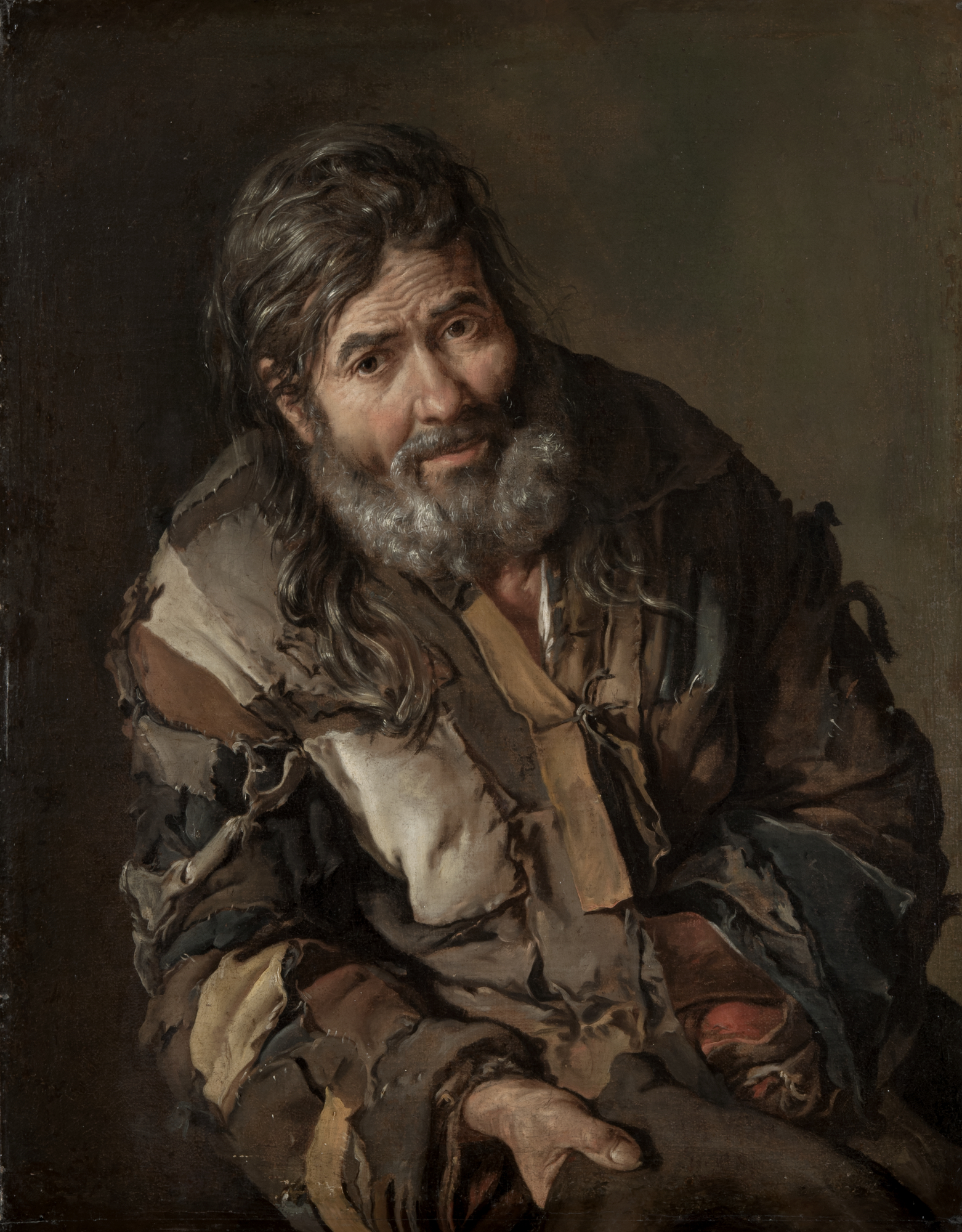Giacomo Ceruti at the Getty
 |
| Giacomo Ceruti, Beggar, about 1735–40. Gothenburg Museum of Art |
Ceruti had precursors in the peasant subjects of Dutch painting and especially, the Le Nain brothers of France. But the scale and earnestness of Ceruti's portrayals demands that attention be paid. The subjects loom against pale, sketchy landscapes, like actors against a backdrop. The palette is shades of brown with a few muted primaries. Some figures are shown in profile, faces nearly invisible.
 |
| Giacomo Ceruti, Little Beggar Girl and Woman Spinning, about 1730–34. Private collection. Image (c) Photostudio Rapuzzi, Brescia |
Subjects range from beggars to workers who could be confused for paeans to industry: women spinning, cobblers making shoes, and basket porters offering to lug heavy stuff for small change. Gallery texts point out how precarious the petit proletariat's lot was. Those who plied a trade barely got by. Their ultimate fate, should they survive war and plague, was disability and begging.
Who bought these paintings, and why? The buyers were, needless to say, the wealthy. The fate of the poor was a topical issue in Brescia when Ceruti lived there. The aristocracy and the church agreed in principle that a social safety net was needed. This focused on the "redeemable" poor, those who worked hard for a less-than-living wage; disabled veterans; and those too old to work. Ceruti's subjects appear to fall into these categories.
 |
| Giacomo Ceruti, The Little Man, about 1720–25. Private collection |
Ceruti was a versatile painter who also portrayed landed gentry and did altarpieces and still lifes (the Getty recently bought two still lifes). But the poverty subjects are the basis of Ceruti's reputation, and they make the best case for his relevance today. As America grapples with homelessness and escalating Gini coefficients, Ceruti continues to resonate.
"Giacomo Ceruti: A Compassionate Eye" runs through Oct. 29, 2023. It comes with a catalog edited by Davide Gasparotto.




Comments
Ceruti did for peasant portraiture what van Dyck did for noble portraiture. And Ceruti takes the on the sublime Le Nains and doubles their refinement.
Splendid, too, that there is an exhibition catalog, as the literature to date is virtually silent.
See the Met entry for Ceruti...there's a better pic there of "The Dwarf":
https://www.metmuseum.org/art/collection/search/828497